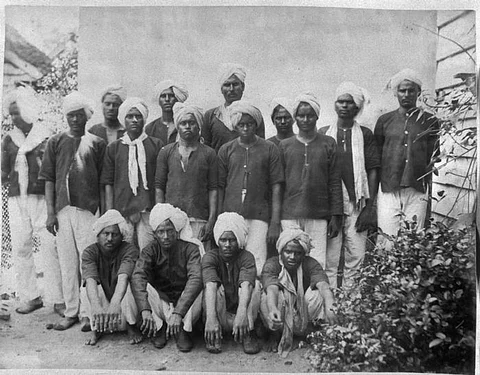Suriname in South America celebrates June 5 as Indian Arrival Day
- Indian Arrival Day is celebrated in various countries to mark the arrival of Indians as indentured labour
- Indians form 27% of Suriname's population, largest among all communities
- Speeches and parades are performed to celebrate Indian Arrival Day in the country
A huge number of the Indian population was shipped to various parts of the world as indentured labor by powerful European authorities. As a result, various countries have a sizable chunk of their population attributed to Indians even to this day.
To celebrate and respect the Indian Diaspora, many countries celebrate Indian Arrival Day, which, as mentioned in previous articles published by NewsGram, is "a national holiday celebrated in various countries of the Caribbean, the island nation of Mauritius and Suriname, on different days to acknowledge the first wave of arrival of laborers from the Indian subcontinent by British colonial authorities."
Indian Arrival Day in Suriname, South America is celebrated on June 5. The country is nestled between Guyana to its west, Brazil to its south and French Guiana to its east. Originally inhabited by local tribes, Suriname was discovered by the Europeans and became a Dutch colony in the 17th century, before finally gaining sovereign status in 1975.
Map of Suriname. Image source: Wikipedia
On 5 June 1873, Lala Rookh, the sailing ship carrying 452 laborers arrived in Paramaribo, the modern capital of Suriname, after three long months of voyage from Calcutta. This was the first of around 64 vessels which brought over 34,000 Indian laborers through the years of 1873 to 1916, most of them originating from the modern Indian states of Uttar Pradesh and Bihar. The Dutch people tricked these Indians into believing they were being taken for pilgrimage to the holy land of 'Sri Ram', which turned out to be the colony of Suriname.
After their contractual period of labor, which was 5 years for most workers, the Dutch government lured the laborers to settle permanently in their colonial lands. A lot of incentives were provided, like free settlement rights and the provision of a 100 Dutch guilders. These incentives seemed to be evidently popular, as 23,000 'Hindustanis' resolved to stay back and start a life in Suriname. With the acquisition of small plots of rice land, which later spread to larger areas, the Indian diaspora found a source of revenue.
Follow NewsGram on Facebook: NewsGram
With the onset of the 20th century, more and more Hindustanis began to explore the sectors of trade and transport. They realized the importance of Western Education to acquire high income jobs, and ensures their children received proper education. The settlement of Hindustanis was helped by the fact that the Dutch Government gave out immediate Dutch Citizenship status to everyone born on Surinamese land. With the progression of time, the Indian diaspora ventured into the field of politics and governance, and eventually made their mark in Suriname.
Follow NewsGram on Twitter: @newsgram1
The sudden rise of the Indian community was resented by a few local populations and tribes. In 1975, when Suriname was granted independence by the Netherlands, as many as 50% of the then 300,000 strong Indian Diaspora opted to migrate to Netherlands owing to racial tensions and the liberal dutch citizenship.
Today, nearly 27% of Suriname's population is comprised of East Indians, the largest ethnicity in the country, which mostly originated from Uttar Pradesh and Bihar. As a result, 22.3% of the population also practices Hinduism, second largest chunk after Christianity, which is followed by 48% of the population.
June 5 is considered a national holiday in Suriname, and important speeches by prominent political figures, like the Indian Ambassador to Suriname are delivered. Wreaths and flowers are often laid at the 'Baba and Mai' statue, which represents the first Indian to set foot on Surinamese soil. Parades and coaches along streets attract thousands of spectators, and showcases the unique culture of immigrants and the diaspora.
-by Saurabh Bodas, an intern at NewsGram. Twitter: @saurabhbodas96
READ ALSO:


